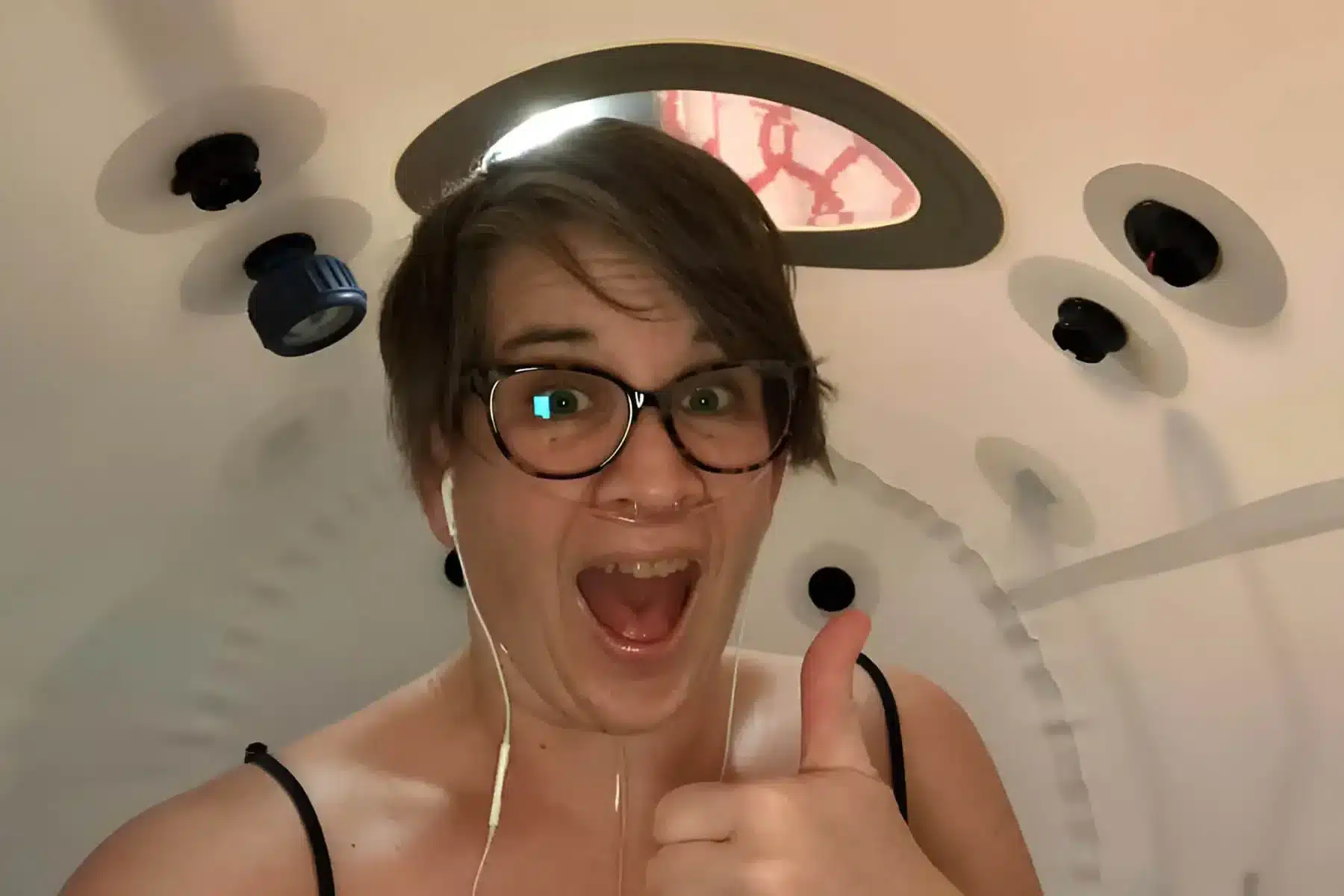What is oxygen therapy?
Hyperbaric Oxygen Therapy (HBOT) is a powerful health therapy where you lie inside a pressurized hyperbaric chamber and breathe oxygen. By pressuring oxygen, this increases the absorption of that oxygen to deliver directly to the cells and organs of our body, which activates active healing. Every health condition greatly benefits by the addition of oxygen, such as brain and nerve conditions like TBI, Autism, Alzheimer’s/Dementia and autoimmune conditions like Parkinson’s, Multiple Sclerosis, Lyme Disease and more.

Benefits and uses of oxygen therapy
Hyperbaric Oxygen therapy is commonly used to help people with health challenges, both chronic and acute. Pressure allows oxygen to be ‘melted’ into the liquid of the blood called plasma. This allows the oxygen to bypass inflammationa and blockages and more readly deliver it to injuries, organs and systems that need repair. Some benefits and uses of oxygen therapy include:
- Improving circulation, wound healing, and immunity
- Reducing inflammation, swelling, and edema
- Enhancing and balancing the body’s immunity and growth factors
- Slowing down the aging process and increasing longevity
- Improving athletic performance and energy levels
Your healthcare provider may recommend oxygen therapy based on your specific medical needs.
Overview of oxygen therapy costs
Oxygen therapy costs in a clinic setting can vary between (60 a session to )450 a session depending on the clinic facility. A home portable oxygen chamber is more affordable, and it allows you to safely ‘dive’ daily and at your own convenience. The cost of owning your own chamber may be as low as $15 a day if you pay the chamber off in 12 months.
Factors influencing the cost of oxygen therapy
The cost of HBOT varies based on different factors. Here are some key aspects that influence the cost:
- Hard or Soft Chamber: Hard chambers go to higher pressure, as much as 3ATA. Their prices range from (250-450 per session. They are meant to be used for a limited time and are used mostly for acute medical conditions. Soft chambers at a clinic range more around )60-125 per session and are meant to be utilized on an ongoing basis, and to heal at a slow and steady pace.
- Duration of treatment: Doctors typically recommend 40 sessions, although this may only just begin to scratch the surface of your journey to health. Chronic health conditions are more complex and so require even a year for the benefits to accumulate. Then, to maintain the accomplishment of oxygen therapy, it makes sense to continue your daily dives. The investment you make in a home chamber makes more sense for long term treatment over clinic chamber dives.
Insurance Coverage and Oxygen Therapy
In the United States, The Food and Drug Administration (FDA) currently recognizes HBOT for a limited list of 14 conditions, often referred to as “on-label” conditions. Most insurance plans cover some or all of the cost of HBOT when it is given to the patient for one of these FDA-approved conditions. The specific conditions that are covered may vary from plan to plan.
Some of the most common conditions that are covered by insurance for HBOT include:
- Radiation tissue damage
- Diabetic lower extremity wounds (diabetic foot ulcers
- Failed skin grafts and flap
- Crush injury & other acute traumatic ischemia
- Necrotizing soft tissue infectio
- Carbon monoxide poisoning and smoke inhalatio
- Central retinal artery occlusio
- Non-healing wound
- Gas gangren
- Decompression sicknes
- Idiopathic sudden sensorineural hearing loss (ISSHL)
These conditions, alone, are recognized for HBOT therapy. All other health conditions (brain/nerve disorders or chronic infections and autoimmune conditions) are not yet accepted for insurance coverage.
- Location: The drive to your local clinic can add to your cost of therapy. Many towns do not offer Hyperbaric Therapy. So, consider the price of driving back and forth to and from the clinic or to the nearest town with a Hyperbaric clinic. Once owning a chamber, the price is no longer a consideration.
Ways to make oxygen therapy more affordable
To make oxygen therapy more affordable, you can consider a few strategies:
- Check with your insurance provider to see if they cover any part of the cost.
- Inquire about financial assistance programs or charities
- Discuss your budget and financial concerns openly with your healthcare provider to explore all possible options for affordable oxygen therapy.
- Consider a preowned chamber or ‘Scratch ‘n Dent’ unit when available. Scratch ‘n Dents are new chambers with slight imperfections, so the price is significantly reduced for more affordability
- Opt for a home hyperbaric chamber, which can be more cost-effective in the long run compared to clinical chambers.
By implementing these cost-saving tips, you can help you to make realistic decisions on the best route to doing HBOT and to help you to make oxygen therapy more affordable and accessible for your needs.

